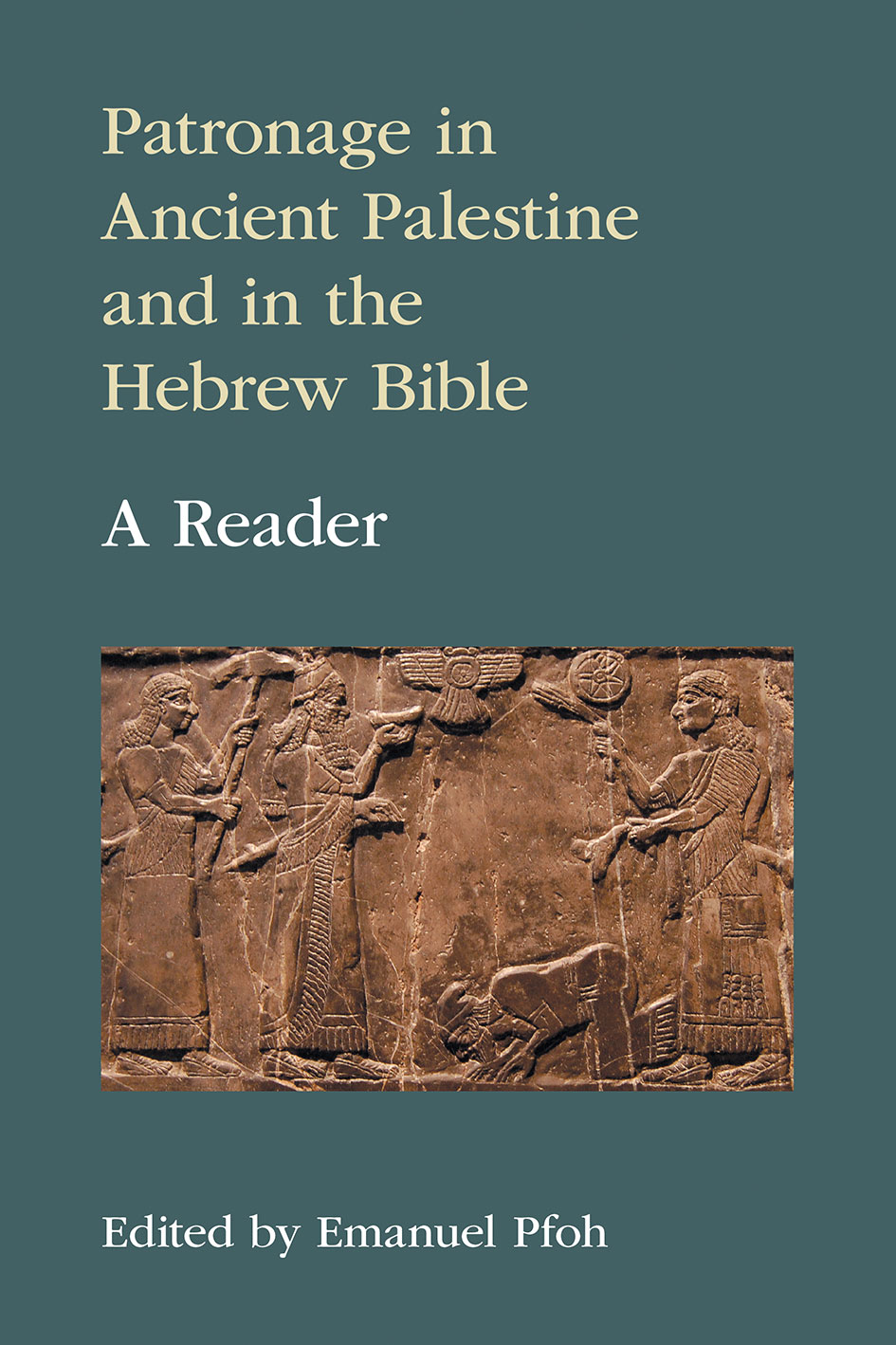Patronage in Ancient Palestine and in the Hebrew Bible: A Reader
£80.00
While these selected papers do not presume to offer an exhaustive treatment of periods, historical cases and themes in ancient Palestine and in Hebrew Bible literature, they variously illustrate the many possibilities of the concept of patronage to elucidate them.
Patron—client relationships have been documented and studied by anthropologists and sociologists since the 1950s. They are known in rural settings and urban locations alike, and virtually in every region of the world. But it was only in the last decades of the twentieth century that this analytical model was slowly incorporated into the socio-political interpretation of biblical texts and other ancient Near Eastern sources. The patronage model proves to be a useful interpretative tool, casting new light on many aspects of the history of Israel and of other socio-political communities in the southern Levant. Moreover, the concept of patron—client relationships clarifies many of the implicit socio-politics found in the narratives and motifs of several biblical books.
This remarkable and comprehensive new reader collects over 20 studies by renowned scholars dealing with different aspects and situations of patronage: in the context of Southwest Asia (the ‘Middle East’) during the second millennium bce, in relation to the history of ancient Palestine during the first millennium bce, and as well with references to patron—client ties in texts of the Hebrew Bible. While these selected papers do not presume to offer an exhaustive treatment of periods, historical cases and themes in ancient Palestine and in Hebrew Bible literature, they variously illustrate the many possibilities of the concept of patronage to elucidate them.
Additional information
| table of contents | INTRODUCTION:PATRONAGE AS ANALYTICAL CONCEPT AND SOCIO-POLITICAL PRACTICE Emanuel Pfoh Part I PATRONAGE IN ITS ANCIENT SOUTHWEST-ASIAN CONTEXT 1. THE PATRON GOD IN THE ANCIENT NEAR EAST K.L. Noll 2. PATRONAGE IN THE ANCIENT NEAR EAST Raymond Westbrook 3. JUSTICE IN WESTERN ASIA IN ANTIQUITY, OR: WHY NO LAWS WERE NEEDED! Niels Peter Lemche 4. ELITE EMULATION AND PATRONAGE RELATIONSHIPS IN THE MIDDLE BRONZE: THE EGYPTIANIZED DYNASTY OF BYBLOS Roxana Flammini 5. SOME REMARKS ON PATRONAGE IN SYRIA-PALESTINE DURING THE LATE BRONZE AGE Emanuel Pfoh 6. THE CONSTITUTIVE PRINCIPLES FOR ESTABLISHING JUSTICE AND ORDER IN NORTHWEST SEMITIC SOCIETIES WITH SPECIAL REFERENCE TO ANCIENT ISRAEL AND JUDAH Herbert Niehr Part II PATRONAGE IN PALESTINE DURING THE FIRST MILLENNIUM BCE 7. KINGS AND CLIENTS: ON LOYALTY BETWEEN THE RULER AND THE RULED IN ANCIENT ‘ISRAEL’ Niels Peter Lemche 8. PEASANT POVERTY: RENT CAPITALISM IN THE DAYS OF AMOS Bernhard Lang 9. PATRONAGE AND THE POLITICAL ECONOMY OF ANCIENT ISRAEL Ronald A. Simkins 10. THE HIDDEN BENEFITS OF PATRONAGE: DEBT Philippe Guillaume 11. REASSESSING THE CHARACTER OF THE JUDAHITE KINGDOM: ARCHAEOLOGICAL EVIDENCE FOR NON-CENTRALIZED, KINSHIP-BASED COMPONENTS Aren M. Maeir and Itzhaq Shai 12. NEHEMIAH’S ADVERSARY, TOBIAH THE PATRON Diana V. Edelman 13. GRAECO-ROMAN EUERGETISM Susan Sorek Part III PATRONAGE IN THE HEBREW BIBLE 14. EXCHANGE, JUSTICE AND MERCY IN GENESIS 18–19 Thomas M. Bolin 15. ‘HOUSE OF DAVID’: AN EPONYMIC REFERENT TO YAHWEH AS GODFATHER Thomas L. Thompson 16. A Hebrew Mafioso: Reading 1 Samuel 25 Anthropologically Emanuel Pfoh 17. GOD AS FRIENDLY PATRON: REFLECTIONS ON ISAIAH 5.1-7 Hannes Olivier 18. ‘HE IS YAHWEH; HE DOES WHAT IS RIGHT IN HIS OWN EYES’: THE OLD TESTAMENT AS THEOLOGICAL DISCIPLINE Thomas L. Thompson 19. PATRONAGE AND CLIENTAGE BETWEEN GOD, ISRAEL, AND THE NATIONS: A SOCIAL-SCIENTIFIC INVESTIGATION OF PSALM 47 Jo-Marí Schäder 20. THE MARITAL METAPHOR OF YHWH AND ISRAEL IN ANCIENT ISRAEL WITH A FOCUS ON ITS OCCURRENCE IN HOSEA Ehud Ben Zvi 21. THE CHARACTER OF YHWH AND THE ETHICS OF THE OLD TESTAMENT: IS IMITATIO DEI APPROPRIATE? Walter J. Houston |
|---|


Reviews
There are no reviews yet.